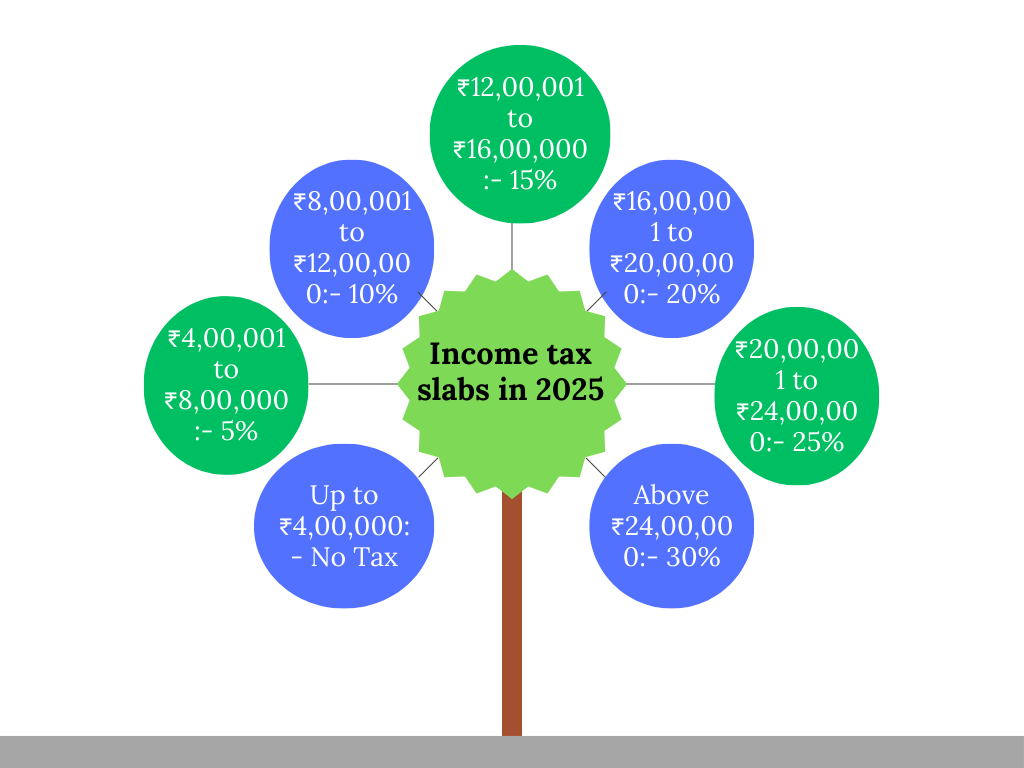Income Tax Slabs in 2025
Taxpayers in India file their income tax returns whether they have taxable income or not. The government keeps revising what part and how much income is taxable under the Income Tax. Such announcements are made in each year during the budget time. This year, the Finance Minister has announced the revised income threshold limits for tax purposes. This article will discuss the old and new income tax slabs in 2025 so that individuals can proceed to file ITR based on the taxability of their income.
So, if a person’s income falls within a particular slab, it will be taxed at the relevant rate for that slab. Income above a particular bracket will also face a tax at the next higher rate, and so on. This makes everyone pay proportionate to their income and is therefore economically fairly balanced.

How do Income Tax Slabs Work?
In India, the taxation system has been evolving for the last few years. The income tax slabs of India are different from the Old or Traditional Tax Regime and the New Tax Regime which was launched in the financial year 2024-2025.
The Old regime exists with sundry exemptions and deductions and the New Regime is less and has no significant exemptions or deductions. Thus, an aspirant taxpayer can easily select an income tax slab best for him.
Tax Slabs under the Old Tax Regime:-
Up to ₹2.5 lakhs:- No Tax
₹2.5 lakhs to ₹5 lakhs:- 5%
₹5 lakhs to ₹10 lakhs:- 20%
Above ₹10 lakhs:- 30%
Tax Slabs under the New Tax Regime:-
Up to ₹4,00,000:- No Tax
₹4,00,001 to ₹8,00,000:- 5%
₹8,00,001 to ₹12,00,000:- 10%
₹12,00,001 to ₹16,00,000:- 15%
₹16,00,001 to ₹20,00,000:- 20%
₹20,00,001 to ₹24,00,000:- 25%
Above ₹24,00,000:- 30%
Advantages of Income Tax Slabs:-
The slab system has obvious advantages on both sides—the governments and the taxpayers:-
- Income Tax Slabs creates social equity:– By not taxing higher incomes to a higher percentage creates Income-Tax Slabs for a fair quantum of taxation and prevents over-taxation of lower incomes.
- Leads to Savings and Expenditure:- Under a progressive slab system, there are more savings among low and middle-income families, hence an increase in economic activities.
- Financing Basic Public Services:- Income tax is an important source of finance for services such as healthcare and education, as well as infrastructure.
Income Tax Slabs and Its Problems:-
- The high degree of complexity:– The availability of more than one slab causes a reduction and exemption that may give tax filing a more complex look. Hence, It can be perplexing to those who do not know the system.
- Risk of tax evasion:- It will increase the tax rate on high-income individuals, which consequently makes it a salutary experience in some cases. It tends individuals or high taxpayers to find loopholes just to pay less tax, thus defeating the purpose of equity in the system.
- Bracket Creep:- Inflation means that people may be pushed into higher tax brackets without an increase in their real income. The purchasing power decreases, and so does an unintended tax rise.
Get Started with TaxDunia
The introduction of structured and progressive income tax slabs by governments makes sure that the burden of taxation is leveled, and this will not impose pressure on low-income earners; instead, various services for public expenditures will get the necessary funding to improve the welfare of the entire community. From the Indian taxpayer’s perspective, the knowledge of income tax slabs is crucial in planning for finance. Let TaxDunia file your ITR with the updated taxable income status in the country. Make sure that you leverage the latest tax reliefs announced in budget 2025.

